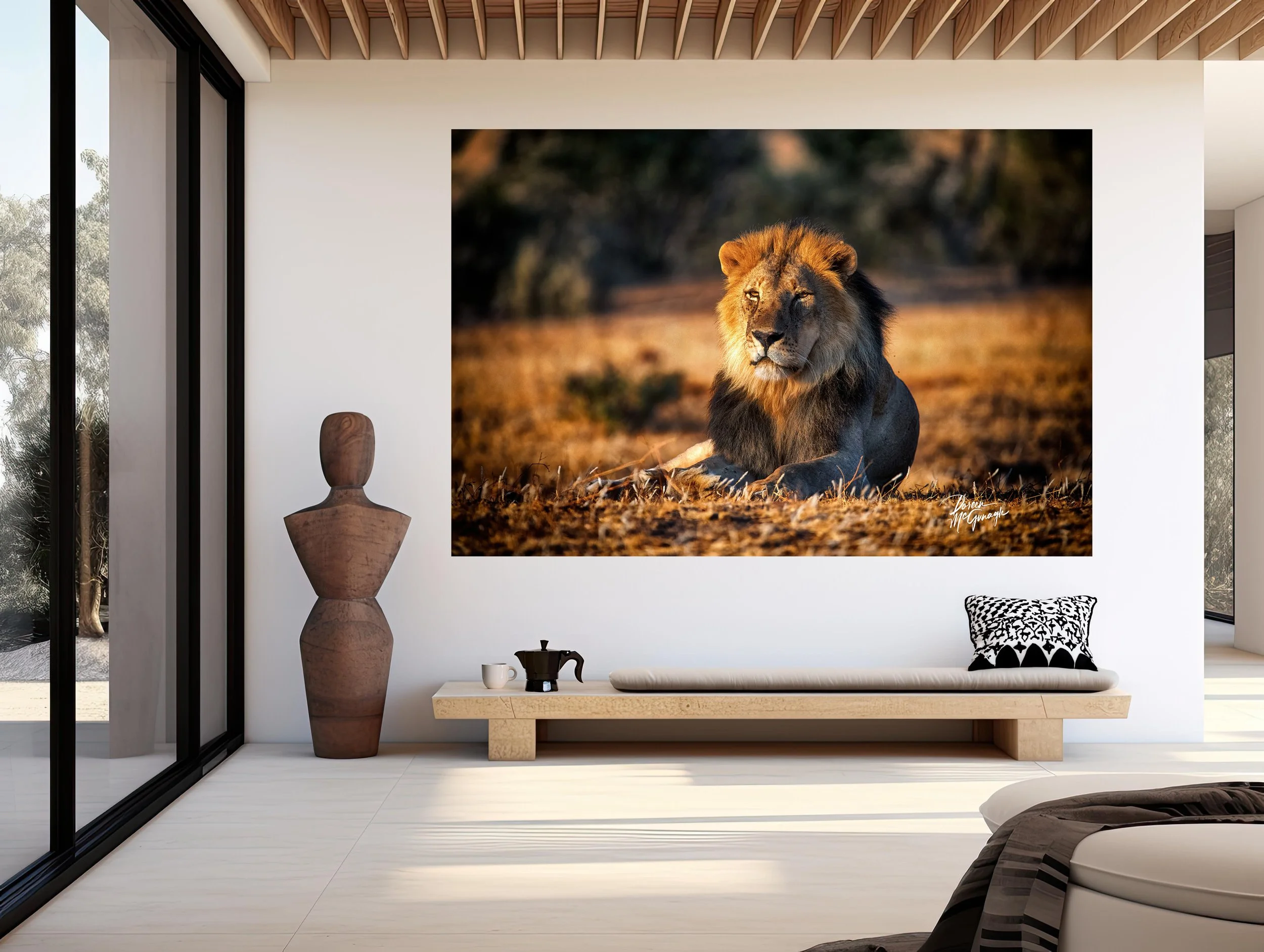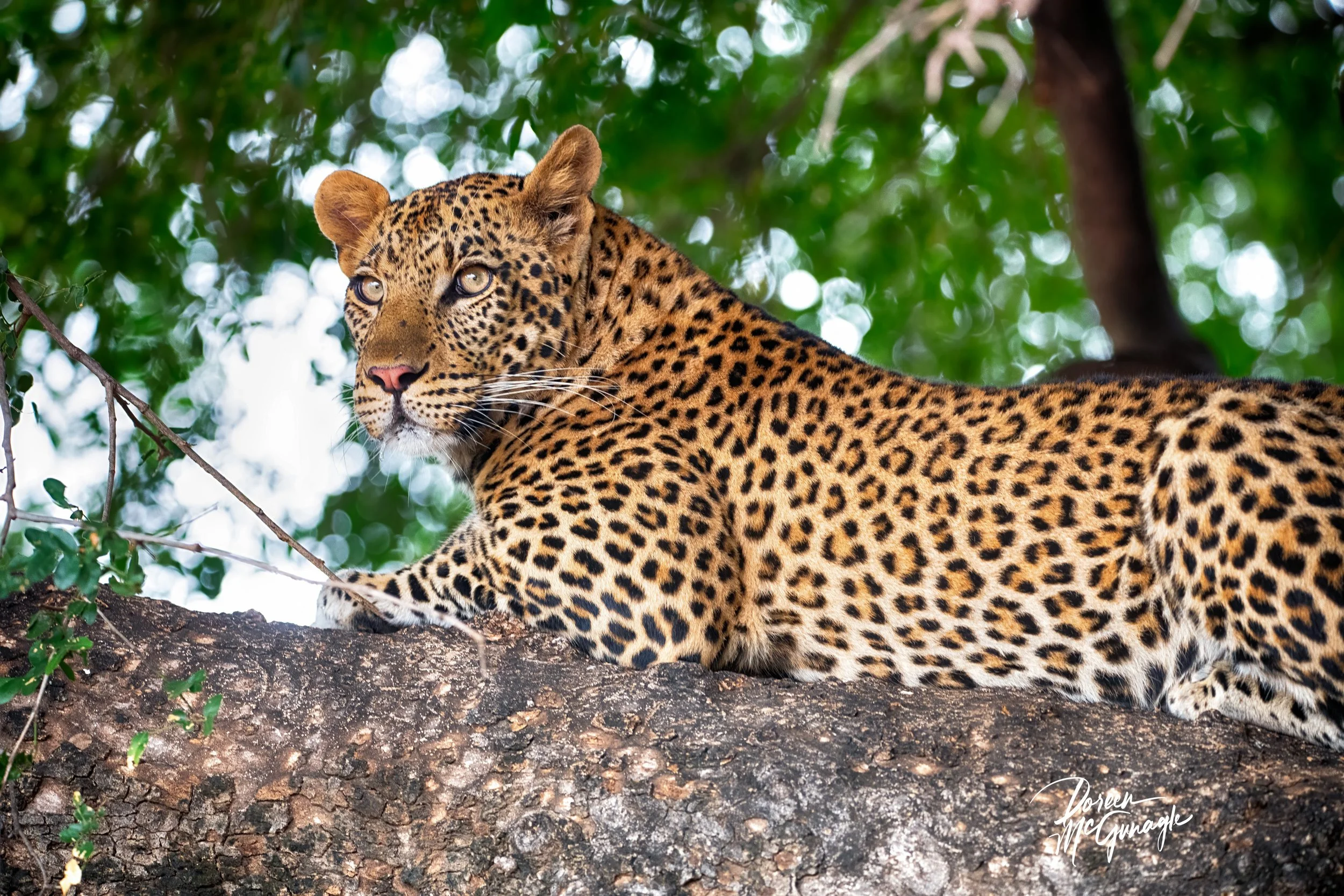What makes wildlife photography challenging and rewarding?
Wildlife photography stands as one of the most demanding and rewarding genres of fine art photography. For photographers like Doreen McGunagle, capturing the essence of nature's untamed beauty is both a profession and a passion. This genre requires not just technical expertise but also a deep understanding of animal behavior, patience, and an unwavering commitment to storytelling. Let’s explore what makes wildlife photography both challenging and rewarding, delving into its unique appeal and offering insights for those who seek to connect with nature through their lens.
The Challenges of Wildlife Photography
1. Unpredictable Nature of Wildlife
Animals move on their own schedules, not yours. Unlike a controlled studio setting, the unpredictability of wildlife means you often need to anticipate and adapt to the behavior of your subjects. Capturing rare moments—like the first flight of a bird or a predator’s hunt—requires careful observation and split-second decision-making.
2. Harsh and Changing Environments
Wildlife photographers often find themselves in extreme conditions—from the frozen tundra to sweltering rainforests. Managing equipment and staying comfortable while ensuring your camera gear remains functional adds to the complexity of the shoot. Moisture, heat, dust, and cold can wreak havoc on even the best cameras and lenses.
3. Technical Mastery
Successful wildlife photography demands a firm grasp of technical skills, such as understanding exposure, shutter speed, and focus modes. A fast-moving subject requires quick reflexes and precise camera settings to freeze the moment or create intentional motion blur. Low light, long distances, and unpredictable movement can challenge even seasoned photographers.
4. Patience and Perseverance
Wildlife photography is not for the impatient. Hours, days, or even weeks can pass before you capture the perfect shot. Whether it’s waiting for the golden light of sunrise or staking out a watering hole for animal activity, patience is a non-negotiable quality for wildlife photographers.
5. Ethical Considerations
Respect for wildlife and their habitats is paramount. Capturing nature photos must never come at the expense of disturbing animals or damaging ecosystems. Wildlife photographers need to strike a balance between getting the perfect shot and being responsible stewards of the environment.
The Rewards of Wildlife Photography
1. Connection with Nature
Few experiences compare to witnessing nature’s raw beauty firsthand. Whether it’s the sight of a lioness caring for her cubs or the graceful flight of a heron, wildlife photography brings you closer to the natural world, fostering a profound appreciation for its wonders.
King of the Savanah
Discover the wild beauty of fine art photography with Doreen McGunagle Fine Art. This breathtaking photograph of the King of the Savanna captures the lion's regal presence against a golden sunset, bringing a sense of tranquility and natural elegance to any space. With the warm hues of the savanna and the soft focus of scattered trees in the background, this wildlife photography piece offers a timeless, inspiring view of nature. Learn more
2. Capturing Rare Moments
Wildlife photographers have the privilege of freezing extraordinary moments in time. These images often reveal details invisible to the naked eye, such as the intensity of an eagle’s gaze or the intricate patterns of a butterfly’s wings. The ability to share these moments through fine art photography prints transforms them into timeless treasures.
3. Storytelling Through Images
Every wildlife photo tells a story. A cheetah’s focused stare, an elephant family walking to a watering hole, or the playful antics of otters all evoke emotions and inspire curiosity. As an art photographer, Doreen McGunagle’s work captures these narratives, creating connections between viewers and the natural world.
4. Inspiring Conservation
Wildlife photography has a unique power to advocate for conservation. By showcasing the beauty and fragility of the natural world, photographers can raise awareness about endangered species, habitat destruction, and climate change. Their work often motivates others to protect the environment.
5. Artistic Expression
Wildlife photography blends technical precision with artistic vision. It’s not just about documenting an animal; it’s about creating art photos that stir emotions, provoke thought, and inspire wonder. From the dramatic interplay of light and shadow to the vibrant colors of a rainforest, wildlife photography is a medium of boundless creativity.
Tips for Aspiring Wildlife Photographers
Research Your Subject Understanding animal behavior is key to predicting their actions. Study your subject’s habits, habitats, and routines to increase your chances of capturing compelling shots.
Invest in the Right Gear A telephoto lens is essential for photographing distant subjects, while a sturdy tripod ensures stability. High-quality cameras with fast autofocus and good low-light performance are invaluable for wildlife photos.
Master Your Camera Settings Learn how to quickly adjust your camera settings to adapt to changing conditions. Practice using manual mode, continuous autofocus, and burst shooting to enhance your skills.
Practice Ethical Photography Respect wildlife by maintaining a safe distance and avoiding behaviors that could stress or endanger animals. Always leave habitats as you found them.
Be Patient and Persistent Remember, the perfect shot doesn’t come easily. Embrace the journey and savor the moments of connection with nature, even when the wildlife is elusive.
Why Wildlife Photography Matters
Wildlife photography is more than a genre—it’s a way to celebrate and preserve the natural world. Photographers like Doreen McGunagle elevate wildlife photography into fine art, producing prints that bring the outdoors into homes and galleries worldwide. Each photograph is a testament to nature’s resilience and a call to protect its future.
For collectors, wildlife photography prints are more than decorative pieces. They are windows into wild landscapes and a source of inspiration. Whether you’re drawn to the dramatic vistas of landscape photo prints or the intimate details of a lion’s gaze, wildlife photography adds depth and meaning to any space.
Leopard’s Serenity
The lush green foliage backdrop enhances the leopard's majestic presence, making it an ideal choice for those seeking fine art photography prints that evoke the wild's serenity. Perfect for photography wall art, this piece invites you to explore the untamed beauty of nature through photography prints designed to inspire and transform your living space. Available for sale in various sizes, this large photo print is a centerpiece for any photography art gallery or fine art photography collection, offering a window into the wild and a timeless piece for art enthusiasts. Whether for home or gallery display, "Leopard's Serenity" exemplifies the elegance of nature and the artistry of fine photography prints, a must-have for lovers of wildlife and landscape photography. Learn more
Explore Fine Art Wildlife Photography
Doreen McGunagle’s collection of fine art photography prints captures the essence of wildlife with an artistic touch. From dynamic action shots to serene portraits, her work invites viewers to connect with nature’s beauty. Explore her gallery and discover how her wildlife photos can enrich your home or office with timeless photographic art.
Wildlife photography is challenging, but its rewards far outweigh its difficulties. It’s a journey of passion, perseverance, and purpose, offering a unique opportunity to celebrate the natural world while inspiring others to protect it—Shop Gallery Collection of Fine Art Photography from Doreen McGunagle.


